Louis Vuitton goes back to a golden age
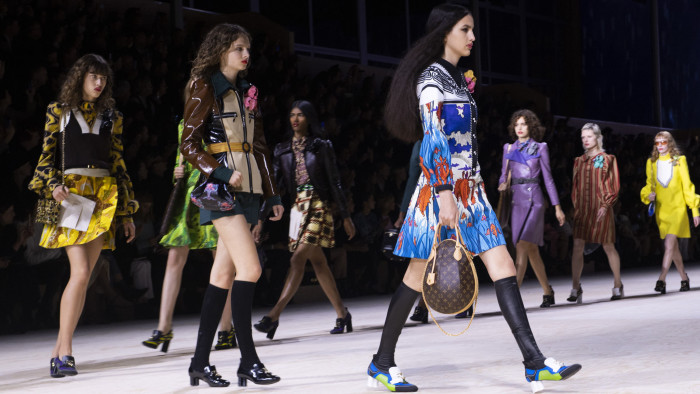
Simply sign up to the Style myFT Digest -- delivered directly to your inbox.
After a month of shows, the last word of the Spring/Summer 2020 season came from designer Nicolas Ghesquière at Louis Vuitton. In Paris we’ve had ultra-commercial retro at Celine, polished modern workwear at Hermès and floral femininity at Dior. And finally, Ghesquière offered an uplifting cocktail of Belle Époque opulence, 1970s flair, and striking, Instagram-friendly handbags.
He reflected on the period between the end of the 19th century and the first world war which saw the Eiffel Tower built in Paris, as “a time of excitement and tremendous change”. He added, “it is about revisiting all that. We wanted to explore notions about what’s outdated and old-fashioned, and nostalgia for a time we can only dream about.”
He cited actress Sarah Bernhardt, and Louis Vuitton’s Art Nouveau family home in Asnières as inspiration, as well as highlighting the fact that the Louis Vuitton monogram was created in 1896. Conveniently, this rich time for culture was also an important moment in the history of the luxury luggage label.
The show was staged by night in the grounds of the Louvre museum, inside a glass cube with a pale wood catwalk and benches. The brand pointed out that the wood was sourced from sustainably managed forests in France, and that everything made of wood will be donated for reuse. It’s tempting to see this as the Stella McCartney effect. She struck a partnership with LVMH in July, not only for the conglomerate to take a minority stake in her label, but also to advise LVMH chairman and chief executive Bernard Arnault on sustainability.
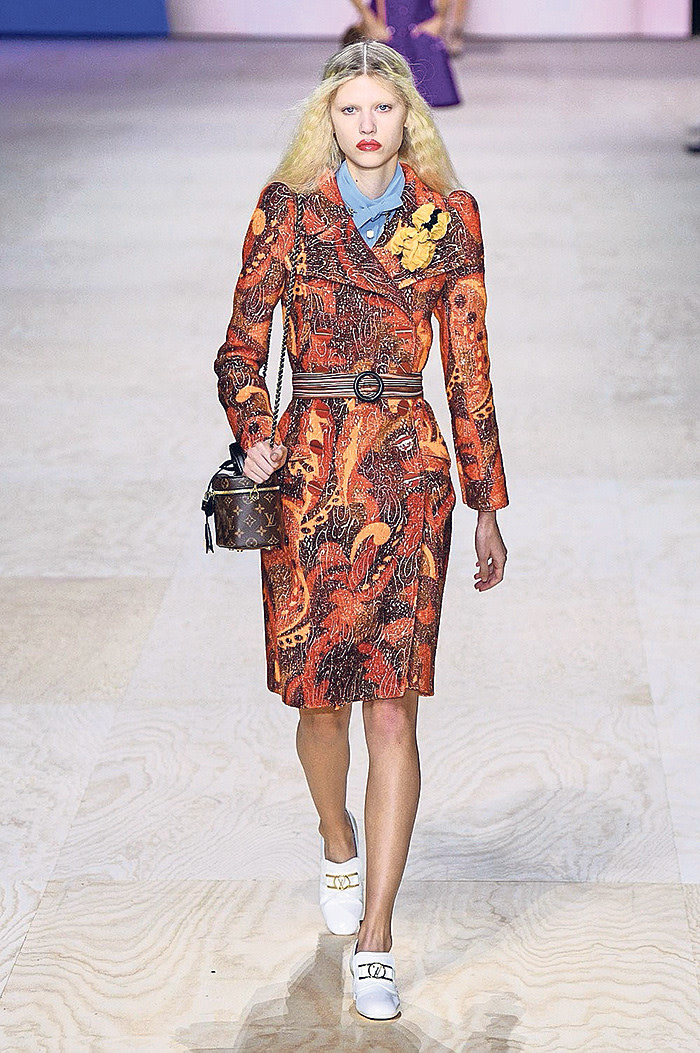
Arnault, the second wealthiest person in the world according to Forbes magazine, watched the show alongside his daughter Delphine, Catherine Deneuve, DJ Mark Ronson and Justin Timberlake. LVMH’s sales for the first six months of the year reached €25.1bn, the first time they have crossed the €25bn mark, and the brand reported that performance was driven by the company’s fashion and leather goods division, which was up 20 per cent, highlighting the “outstanding” performance at Louis Vuitton as well as Christian Dior.
This being Ghesquière, his inspiration was never going to manifest itself as a straightforward homage to an era. The silhouettes were also strongly reminiscent of the 1960s and 1970s, with flared trouser suits and mini-dresses with bishop sleeves. The first look declared a maximalist mood: flared trousers worn with a puff-sleeve checked blouse, with little gilets featuring rainbow-coloured zig-zag sequins layered on top. The same gilet and blouse combination was paired with tiered silk miniskirts in black or white, while flared trousers, some in pinstripe, came with zig-zag patterned waistcoats and jackets. A fabric badge in the shape of a Cattleya orchid — a popular Belle Époque motif — was pinned to the lapels of several looks.
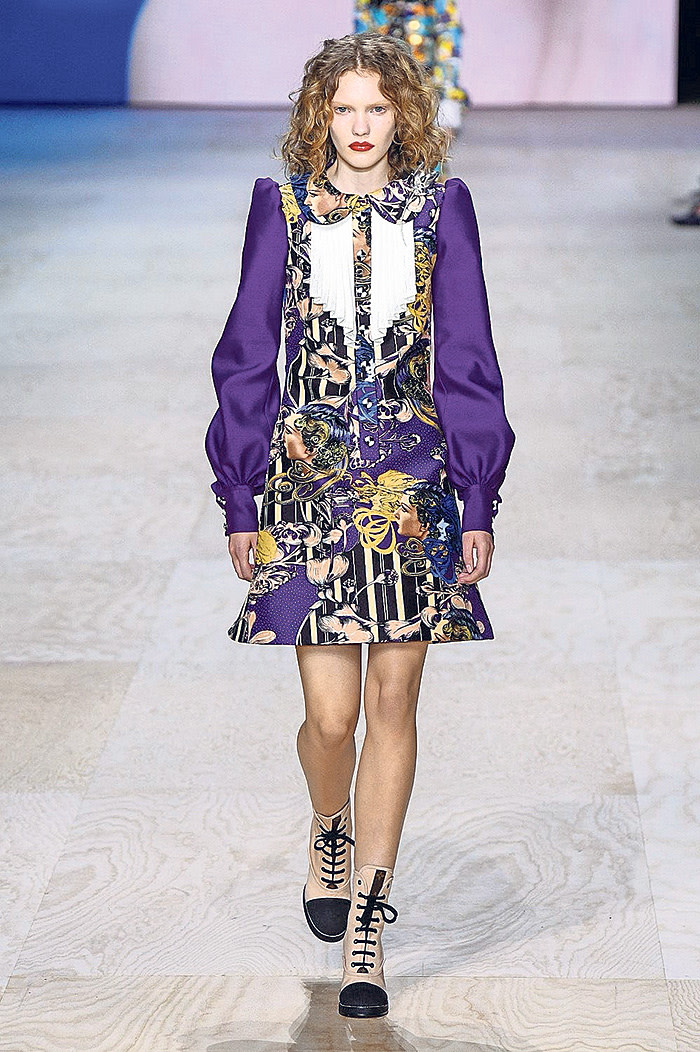
The orchid reappeared as part of swirling Art Nouveau-inspired patterns on girlish mini-dresses, while versions in yellow and buttermilk silk might have reminded Catherine Deneuve of similar garments she wore in the 1960s. Legs have been under wraps for several seasons now as the midi has become the default skirt length, but the short skirt, also proposed by Chanel, is due a comeback.
Fitted coats in a princess shape and yellow and red miniskirts were made from a rich brocade that was part Art Nouveau, part 1970s furnishing fabric, and evoked a lava lamp, with its fiery blobs merging and separating. Towards the end of the collection there were slightly more pared-back looks: tulip-shaped leather skirts and voluminous, draped white blouses and a striped midi-dress. Somehow, when put through the Ghesquière filter, it all retained a certain rigour which averted any risk of retro costume.
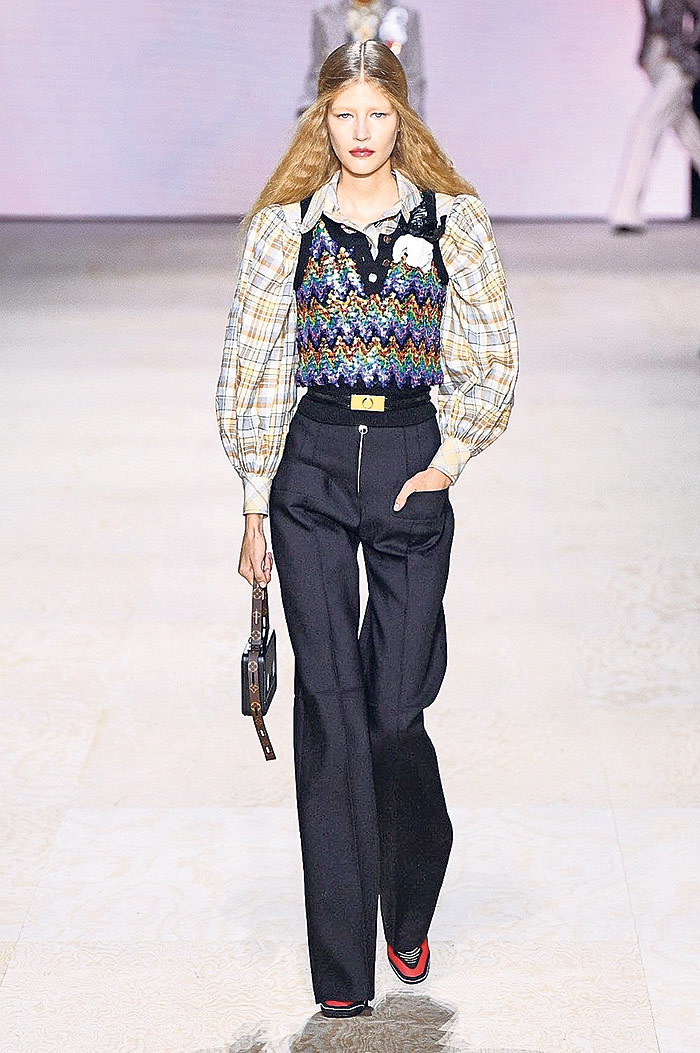
And those all-important bags? Ghesquière introduced two new styles - the Blade, a ladylike top-handle bag with heavy chain and trunk detailing, and the Video Cassette clutch, styled to look exactly like a VHS tape, complete with the name of the film scrawled in felt-tip pen. Here, however, the names had been doctored to reference accessories, so one read “a Trunk to the Future” (presumably a reference to Back to the Future) while a tote bag depicting a pile of video cassettes showed one called “the Trunkinator” instead of the Terminator. While the wordplay might have got lost in translation, they did show a sense of humour when it comes to fashion’s favourite game: mining the past to dress the future.
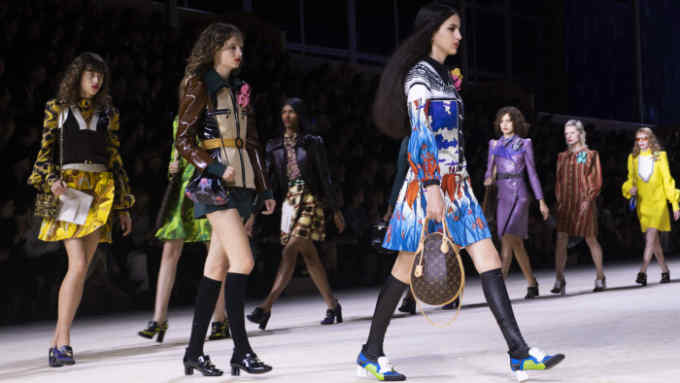
Comments